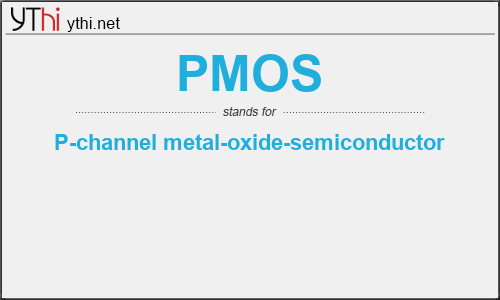What does PMOS mean? What is the full form of PMOS?
The Full Form of PMOS is P-channel metal-oxide-semiconductor.
P-type metal-oxide-semiconductor logic, PMOS or pMOS, is a type of digital circuit constructed using metal-oxide-semiconductor field effect transistors (MOSFET) with a p-type semiconductor source and drain printed on a bulk n-type “well”. When activated, by lowering the voltage on the gate, the resulting circuit allows the conduction of electron holes between the source and drain, turning the circuit “on”.
PMOS circuits are less susceptible to electronic noise than other types of MOSFETs, which makes them easy to fabricate. They were widely used in the early days of microprocessor development in the 1970s. They have a number of disadvantages compared to the NMOS and CMOS alternatives, including the need for several different supply voltages (both positive and negative), high power dissipation in the conducting state, and relatively large features. Also, the overall switching speed is lower.
PMOS was replaced by NMOS as better fabrication techniques were introduced, especially the further elimination of impurities from the silicon stock which lowered noise. NMOS offered major advantages in terms of power use, heat loads, and feature size. NMOS became widely used by the mid-1970s, before it was itself replaced by CMOS logic during the early 1980s.
PMOS
means
P-channel metal-oxide-semiconductor![]()
Translate P-channel metal-oxide-semiconductor to other language.


Leave a Reply
You must be logged in to post a comment.